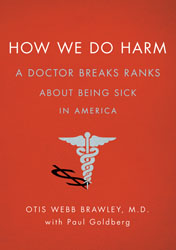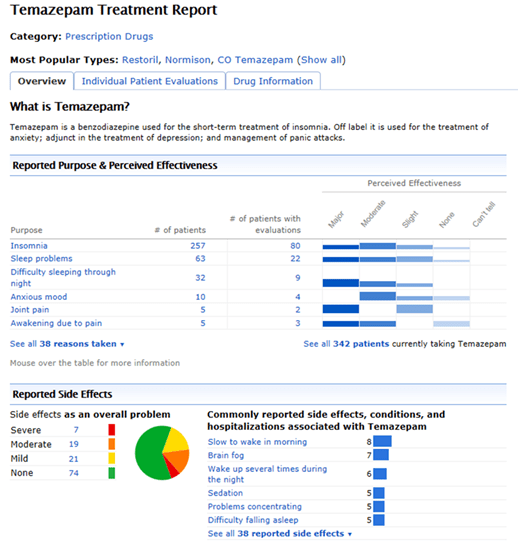Let me start by saying…DON’T read this book if you enjoy having your physician up on a pedestal. It will change your perceptions and skepticism of the system.
DO read this book if you’re frustrated by our US health care system and wonder why we spend so much money without necessarily seeing differences in mortality and outcomes compared to other developed countries.
“Proponents of science as a foundation for health care have not come together to form a grassroots movement, and until this happens, all of us will have to live with a system built on pseudoscience, greed, myths, lies, fraud, and looking the other way. Patients need to learn that more care is not better care, that doctors are not necessarily right, and that some doctors are not even truthful.”
(Quote from the book pg. 27)
Let me start with an abbreviated bio on Dr. Otis Brawley from the American Cancer Society’s website:
Otis W. Brawley, M.D., F.A.C.P., chief medical officer for the American Cancer Society, is responsible for promoting the goals of cancer prevention, early detection, and quality treatment through cancer research and education.
Dr. Brawley currently serves as professor of hematology, oncology, medicine and epidemiology at Emory University. From April of 2001 to November of 2007, he was medical director of the Georgia Cancer Center for Excellence at Grady Memorial Hospital in Atlanta, and deputy director for cancer control at Winship Cancer Institute at Emory University. He has also previously served as a member of the Society’s Prostate Cancer Committee, co-chaired the U.S. Surgeon General’s Task Force on Cancer Health Disparities, and filled a variety of capacities at the National Cancer Institute (NCI), most recently serving as assistant director.
Dr. Brawley is a member of the Centers for Disease Control and Prevention Advisory Committee on Breast Cancer in Young Women. He was formerly a member of the Centers for Disease Control and Prevention Breast and Cervical Cancer Early Detection and Control Advisory Committee. He served as a member of the Food and Drug Administration Oncologic Drug Advisory Committee and chaired the National Institute of Health Consensus Panel on the Treatment of Sickle Cell Disease.
Dr. Brawley is a graduate of University of Chicago, Pritzker School of Medicine. He completed his internship at University Hospitals of Cleveland, Case-Western Reserve University, his residency at University Hospital of Cleveland, and his fellowship at the National Cancer Institute.
I would put this book on my must read list for anyone working in healthcare. I have two other books there:
Here are some things I highlighted as I read the book:
- People diagnosed with cancer who had no insurance or were insured through Medicaid were 1.6x more likely to die within 5 years than those with private insurance.
- “No incident in American medicine should be dismissed as an aberration. Failure is the system.”
- “Our medical system fails to provide care when care is needed and fails to stop expensive, often unnecessary, and frequently harmful interventions even in situations when science proves these interventions are wrongheaded.”
- He introduces the concept of the “wallet biopsy” as a term to describe the difference in care we get once it’s determined what type of insurance we have.
- While he points out and is clearly an advocate for health discrepancies and the issues of the un- and under-insured, he also points out that “wealth in America is no protection from getting lousy care”.
- He hits on a point that I agree with in medicine and everywhere else which is teaching people to say “I don’t know”. He later says “If you truly respect the patients you treat, you will not obscure the line where your knowledge stops and your opinion begins.”
- He makes a key comment “Can the health-care system make itself trustworthy, become accessible and driven by science?” (This reminds me of another book on trust in the healthcare system.)
- “In most cancers, the quality of the surgery is the most important factor in the ultimate outcome.”
- He talks a lot about the motivation of physicians in determining treatment and how that can be misguided over time. While some of this can be explained away with Defensive Medicine, he points out that many other times this is simply the business of healthcare with people making money off these treatments. Or, as he also points out, sometimes it’s simply unwillingness to challenge the status quo of over-treating the patient. [This is something that I’ve heard other oncologists who provide second opinions point out.]
- I learned about “gomers” which stands for get out of my emergency room which are patients who come to the emergency room just to interact with someone without any real symptoms. He also introduces several other terms apparently all derived from a book The House of God about an intership at Beth Israel Medical Center in the 70s.
- He brings up an important issue that us as Americans and many physicians believe to be true which is that “death is a failure of medicine”. I’ve talked with several physicians about this. I believe it’s one of the things that contributes to the enormous amount of money we spend on people in their last 90-days of life.
- He gives a great (but sad) story of the “moral hazard” scenario of a family trying to care for their parent in the last days of their life and all the “senseless acts of medical torture” that they put him through. This is one of his classic examples of where the physician knows better but is actually instructed to do harm.
- He talks about one of the physicians he was assigned to work with during a rotation. I thought this summary of his rules was great:
“You don’t deviate from the science. You don’t make it up as you are going along. You have to have a reason to give the drugs you are giving. You have to be able to quote literature that supports what you are doing. You have to tell patients the truth.”
- At one point, he says that he confirms a truth he learned as a kid which is scary – “Doctors try out things just to see whether they will work.”
- He gives a brief nod to companies using business rules to safeguard patients through technology that requires physicians to document what they are doing and comparing those to guidelines.
- He spends a lot of time on prevention and survivorship in terms of how people justify some of those numbers. It’s worthy of an entire post, but the key point is that early diagnosis by itself simply increases the years of survivorship. It doesn’t actually mean we did anything better. He also points out that due to all the treatments we give patients some of them die of other issues rather than cancer that “improves” the cancer death statistics.
- And, for all of my pharmacy friends, he doesn’t miss the opportunity to tell the Nexium story or to talk about Vioxx and what happened in both of those cases.
- His stories are amazingly similar to some of the physicians that I worked with for the past two years. He talks about the overuse of radiologic imaging. He talks about the da Vinci robot.
- He gives some unique insights into the politics of support groups and government funding which I’d never understood before.
- A great quote he uses from Willet Whitmore when talking about PSA testing and prostate cancer was:
“When cure is possible, is it necessary, and when cure is necessary, is it possible?”
- I also liked a quote he gave from another urologist which said:
“There is the kind of prostate cancer that can be cured, but does not need to be cured; there is the kind of prostate cancer that needs to be cured and cannot be. We all hope there is a kind of prostate cancer that needs to be cured and can be cured.”
- This leads up to his point that research shows that 1.3M American men were needlessly treated for localized prostate cancer from 1986-2005. Wow!
- He was very positive on the US Preventative Services Task Force (USPSTF) which I was glad to hear since that’s the group that several of my physician friends have used before for setting guidelines.
Hopefully, you get the point. It’s a quick read with a good mix of studies, patient stories, and the history of cancer with a focus on both historical and current issues that face us in this time of transformation in health care.
Here’s a few more articles about Dr. Brawley and his book:
As a random point of interest, Dr. Brawley uses several references to teachers and his Jesuit education at The University of Detroit Jesuit High School and Academy in Detroit which is where I also went to school and had some of the same teachers. Our school was featured a few years ago as the last Catholic college prep school still in the city.

 June 29, 2014
June 29, 2014 









